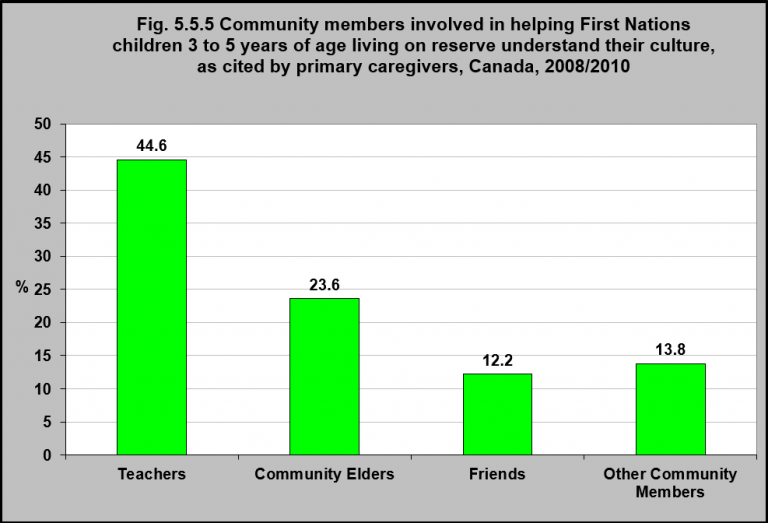Community members involved in helping First Nations children 3 to 5 years of age living on reserve understand their culture, as cited by primary caregivers, Canada, 2008/2010

Source: CICH graphic created using data adapted from First Nations Regional Longitudinal Health Survey (RHS) 2008/10, National report on adults, youth and children living in First Nations Communities. https://fnigc.ca/sites/default/files/docs/first_nations_regional_health_survey_rhs_2008-10_-_national_report.pdf -accessed August 2, 2017.
In 2008/2010, over 40% of primary caregivers of First Nations children living on reserve between the ages of 3 to 5 identified teachers as being involved in helping children understand their culture. The involvement of teachers for children 6 to 8 and 9 to 11 was even higher.
Community Elders were also identified as being involved in helping children understand their culture – 23.6% for children 3 to 5 years of age, 29.6% for 6 to 8 years of age, and 26.3% for 9 to 11 years of age.1
1First Nations Regional Longitudinal Health Survey (RHS) 2008/10, National report on adults, youth and children living in First Nations Communities. https://fnigc.ca/sites/default/files/docs/first_nations_regional_health_survey_rhs_2008-10_-_national_report.pdf-accessed August 2, 2017.
Implications
Building positive culture identity in Indigenous children will require the collective strengths of teachers, families, friends and communities. Each of these entities has the power to exert influence which can contribute to Indigenous children’s risk and resilience.
